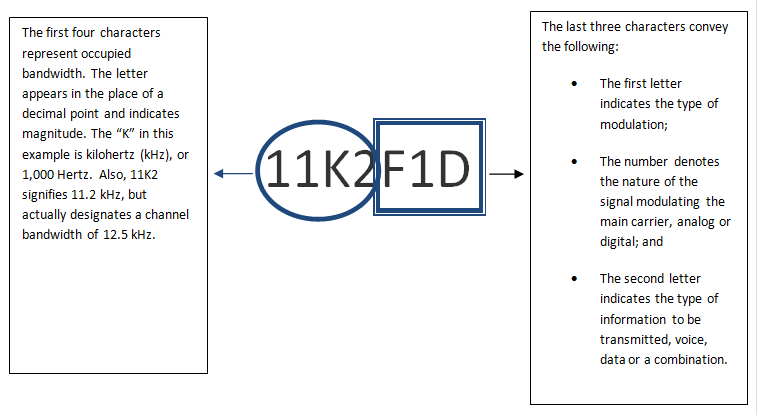An emission designator appears on every FCC private wireless license, as it provides in seven (7) alphanumeric characters, critical operational information about the authorized system. Specifically, an emission designator – and there may be more than one provided on a license – informs those that need to know the system’s channel bandwidth, whether the system is digital or analog, and whether the system is voice, data, or a combination of both.
An emission designator contains two parts, both of which indicate certain system operational characteristics, as follows:
The emission designator used in the example, 11K2F1D, denotes a digital frequency modulation system operating at 11.2 kHz that is transmitting data. For a listing of common codes and their meaning, see Section 90.207 of the FCC rules.
January 1, 2013, was the deadline to comply with the FCC requirement that all 150-470 MHz systems convert their 25 kHz channels to no more than 12.5 kHz channel bandwidths or, deploy system technologies that provide equivalent or better channel efficiencies. Here are some quick clues. If you see emission designators that start with the number 4, 7, 8, 9, 11, 21 or 22, the licensed system is more than likely compliant with the FCC’s narrowbanding rules. If you see 20K0F3E or 20K0F3D alone on an FCC license, these emission designators represent a non-compliant wideband system.
Need help to comply? Contact EWA by phone at 800-482-8282 or by email at info@enterprisewireless.org.


